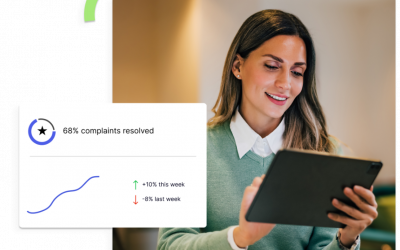Understanding the Disparate Data Problem
Workforce data lives in HRIS, ATS, CRM, LMS, and beyond. Each system holds valuable insights on hiring, retention, performance, and compliance, but they don’t always talk to each other. Without a centralized way to access and analyze this information, HR teams are left stitching together reports from different platforms, often relying on manual spreadsheets that create more headaches than clarity.
Instead of empowering HR teams, data silos slow them down. The result?
- Inconsistent reporting – Different systems tell different stories, making it difficult to get a clear picture of workforce trends.
- Delayed decision-making – By the time HR teams gather the data they need, the workforce landscape has already shifted.
- Compliance risks – When critical records are scattered, organizations struggle to track training, certifications, and policy adherence.
The first step to solving this issue? Recognizing that data chaos isn’t just an IT problem – it’s an HR problem.
Structured vs. Unstructured Data: Why It Matters
Not all workforce data is created equal. To truly make sense of HR insights, you need to understand the difference between structured and unstructured data.
Structured Data: Think of this as the clean, organized information in databases – things like employee names, salaries, job titles, and hire dates. It’s easy to query, analyze, and report on.
Unstructured Data: This is everything that doesn’t fit neatly into a database – emails, performance reviews, feedback surveys, and even meeting notes. It holds valuable insights but is harder to track, search, and analyze.
Most HR teams only tap into structured data, ignoring the rich insights hidden in unstructured sources. The problem? Some of the most critical workforce trends – like employee engagement, flight risks, and internal mobility live in unstructured data. If you’re not integrating both, you’re working with an incomplete picture.
Fixing the Problem: Preparing Your Workforce Data for Action
1. Improve Data Integrity
HR teams need clean, reliable workforce data to make informed decisions. That means:
- Eliminating duplicate or outdated records.
- Standardizing data entry across HR systems.
- Reducing manual reporting errors that lead to inconsistencies.
By strengthening data integrity, your organization can increase trust in workforce analytics and create a foundation for better decision-making.
2. Integrate Data from Multiple Sources
Throwing all workforce data into a single “data lake” might sound like a simple fix, but it’s not that easy. HR leaders need a structured approach to bring together structured and unstructured data from different platforms – without breaking existing processes.
Key challenges include:
- Avoiding duplication and outdated versions of records.
- Mapping unique identifiers across systems (e.g., matching an employee’s performance data with their training history).
- Ensuring IT and HR teams collaborate to align data strategy with business goals.
The goal isn’t just to store more data – it’s to make workforce insights more accessible and actionable.
Moving from Disparate Data to Decision Intelligence
HR leaders don’t need more spreadsheets, they need answers. And that starts with transforming messy, fragmented data into clear, actionable insights. Organizations that break free from disparate data will be better equipped to:
- Anticipate hiring and retention trends before they impact operations.
- Strengthen compliance tracking with centralized, real-time reporting.
- Make smarter workforce decisions without wasting hours on manual data entry.
The Bottom Line: See The Full Picture
Disparate data isn’t just an inconvenience – it’s a silent threat to operational efficiency. Organizations that continue to rely on siloed workforce insights risk missed opportunities, higher compliance risks, and preventable talent challenges.
At ZeroedIn, we understand that you don’t need more data – you need better data. That means no more guessing, no more manual reporting, and no more scrambling to piece together fragmented insights.
Our platform handles the heavy lifting of workforce data integration, creating a single source of truth where structured and unstructured insights work together to drive real impact.
🔍 Don’t be left in the dark—see the full picture of your workforce data. Learn more here.




